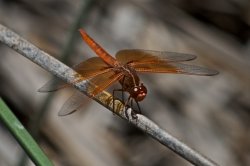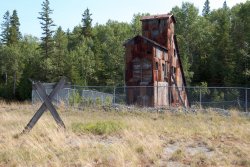Got a tip for us?
Let us know
Become a MacRumors Supporter for $50/year with no ads, ability to filter front page stories, and private forums.
Photo of the day - September 2009
- Thread starter Olifant
- Start date
- Sort by reaction score
You are using an out of date browser. It may not display this or other websites correctly.
You should upgrade or use an alternative browser.
You should upgrade or use an alternative browser.
- Status
- Not open for further replies.
From doylem's neck of the woods...

It's raining... so, yes, it's gotta be the Lake District...
Great shot...

Newport, Oregon - Yaquina Bay boardwalk
Another test of the Tokina 12-24 f/4.

Camera: NIKON
Model: D50
ISO: 200
Exposure: 1/1250 sec
Aperture: 8.0
Focal Length: 12mm
Another test of the Tokina 12-24 f/4.

Camera: NIKON
Model: D50
ISO: 200
Exposure: 1/1250 sec
Aperture: 8.0
Focal Length: 12mm
Feral mountain goat. First in a series:

Nice shot, though the light could be better. Wherever did you find him? And how close were you?

1/1000s - f/8.0 - ISO1600 - 450mm equiv
Beautiful colors. I love the ripples in front of the duck. Very impressive for ISO 1600!
As wild as they come, and not afraid of me. Landed on a small tree perhaps 35 feet away to pose for me ![Big Grin :D :D]()


As wild as they come, and not afraid of me. Landed on a small tree perhaps 35 feet away to pose for me

He/she's a real beauty...! Is that a red-tail? Anyway, nice capture. What lens were you using? I'm interested in adding some glass to be able to photograph wildlife, and was curious as to what you use?
That's one helluva first post. Nice shot.My first post to the photo of the day.
He/she's a real beauty...! Is that a red-tail? Anyway, nice capture. What lens were you using? I'm interested in adding some glass to be able to photograph wildlife, and was curious as to what you use?
I could be wrong, but I believe that the bird is a Northern Goshawk. I primarily use two lenses for wildlife with a Canon 40D: EF 200mm f/2.8L USM, and EF 400mm f/5.6L. For the photo above I used the EF 400mm f/5.6L USM (no IS). Since there is plenty of daylight in Alaska (during the summer, of course), the 400 prime does well for me. For example, it was around 7:30PM when I took the photos of the hawk. While IS would be the best, I take my chances with non-IS lenses and save a lot of cash. Canon primes offer outstanding IQ, even the ones without IS.
-The camera was set to Av (aperture priority)
-f/5.6
-160 ISO
-Shutter: 1/1000 sec.
-Ai-Servo
-Burst mode
I use the 200 prime for shots of ducks nearby (at parks, etc.), for large game such as moose and caribou within perhaps 150 yards, and even for close-ups of flowers or large insects with the aid of a Kenko tube.
Depending on the moment while taking photos of this and other hawks, a 70-200 f/4L would have been perfect. Sometimes the 200 and the 400 are too long, while some other times they are perfect. Hawks in this area get as close as 20 feet from me, making the 200 and 400 too long
Am I the only one that sees a blind cow in this?

Haha! It took me a second.
What did you shoot this with? It's stunning.My first post to the photo of the day.
Don
I could be wrong, but I believe that the bird is a Northern Goshawk. I primarily use two lenses for wildlife with a Canon 40D: EF 200mm f/2.8L USM, and EF 400mm f/5.6L. For the photo above I used the EF 400mm f/5.6L USM (no IS). Since there is plenty of daylight in Alaska (during the summer, of course), the 400 prime does well for me. For example, it was around 7:30PM when I took the photos of the hawk. While IS would be the best, I take my chances with non-IS lenses and save a lot of cash. Canon primes offer outstanding IQ, even the ones without IS.
-The camera was set to Av (aperture priority)
-f/5.6
-160 ISO
-Shutter: 1/1000 sec.
-Ai-Servo
-Burst mode
I use the 200 prime for shots of ducks nearby (at parks, etc.), for large game such as moose and caribou within perhaps 150 yards, and even for close-ups of flowers or large insects with the aid of a Kenko tube.
Depending on the moment while taking photos of this and other hawks, a 70-200 f/4L would have been perfect. Sometimes the 200 and the 400 are too long, while some other times they are perfect. Hawks in this area get as close as 20 feet from me, making the 200 and 400 too longBut keep in mind that this hawk is hunting, specially when I move around and scare small birds and rodents out of hiding. In this case the hawk gets real close, but most times (in other situations) it's too far for even the 400.
Thanks, I really appreciate you taking the time to offer up a lot of really helpful information. I have a couple of lenses coming my way, both of them previous generation glass, but really good glass, the Nikkor 300 f/4.0 AF-D and the Nikkor 80-200 f/2.8 AF-D. Neither are AF-S lenses (built-in motor) but the optics are excellent. I'll be using them on DX format for the extra reach, mainly for wildlife shots, but also when I take the plunge to FX they'll work with either. Anyway, it was great to know how well this focal length range works for you. I imagine you get quite the reach with the 400 on the crop sensor body, and I might have to look at adding a 1.4x or 1.7x converter for the 300mm. Thanks again.
- Status
- Not open for further replies.
Register on MacRumors! This sidebar will go away, and you'll see fewer ads.











